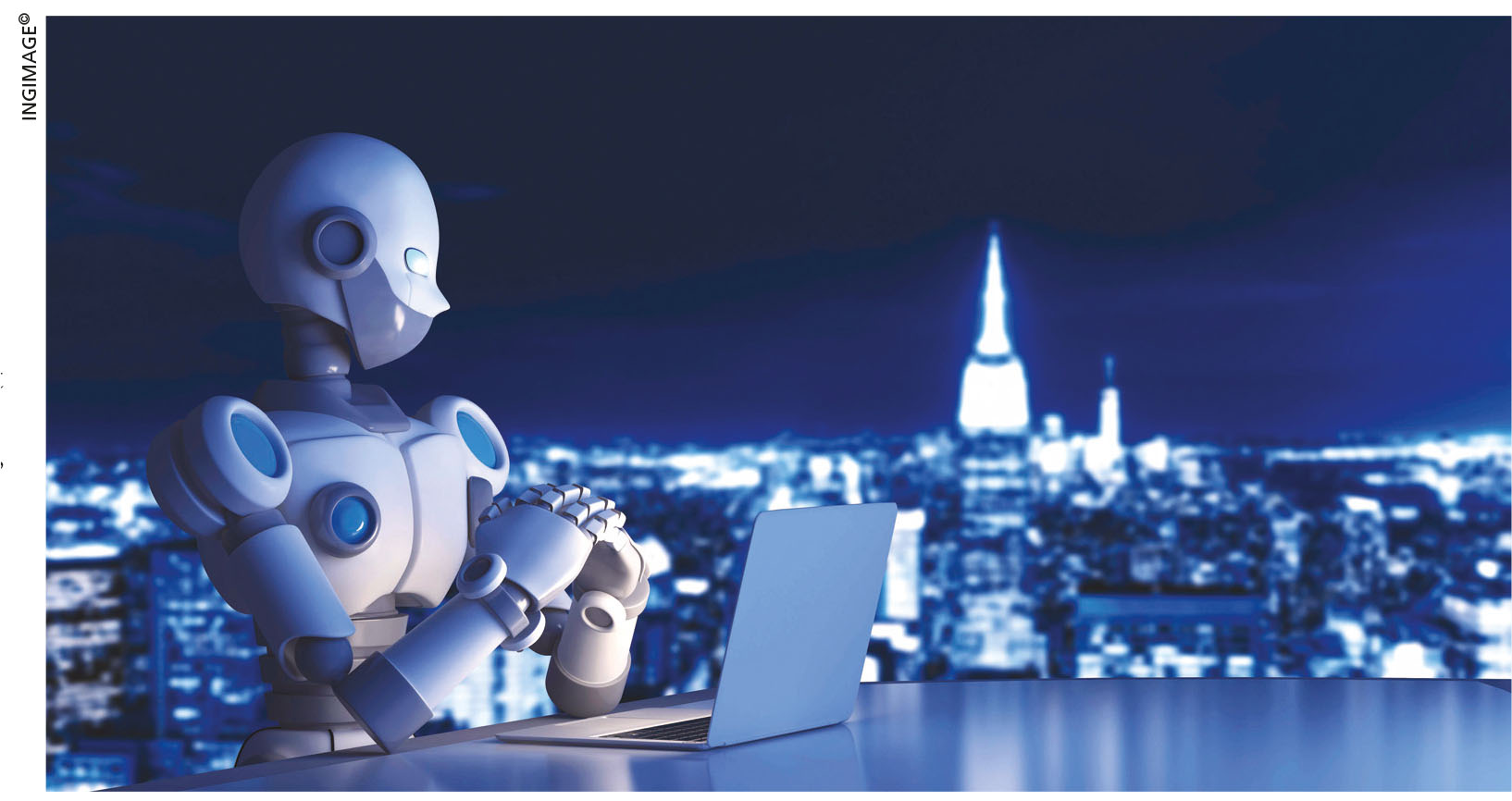THE AI CHALLENGE
THREATS FROM AUTOMATION
Businesses and policy makers must prepare for the age of AI – Gloria Spittel
Hardly any industries will not benefit from the use of AI systems. And there are suggestions that SMEs would also benefit from deploying such systems in their workflows. These grand statements may seem utopian and signalling the inevitable; but the use of artificial intelligence in business isn’t straightforward, predictable or avoidable.
Much of the discussion about AI in business revolves around its impact on the human workforce, specifically in two areas: job security and skills training. The short answer to whether AI will replace human employment is ‘not really’ – and not in all areas; the shorter answer is ‘yes.’
In a report titled ‘Automation and Artificial Intelligence: How machines are affecting people and places’ released earlier this year, the Brookings Institution suggests that nearly 36 million jobs in the US are highly susceptible to automation over the next few decades.
The report states that most automation is likely to occur in jobs that are routine, and consist of predictable physical and cognitive tasks. Jobs that fall into this category include office administration, production, manufacturing, food preparation and numerous others.
But importantly and with serious ramifications, jobs that face the highest risk of automation are those that pay the lowest wages, and employ the least qualified and experienced (usually those with fewer educational qualifications as well as youth).
Once this comes to fruition and unless businesses take steps to mitigate unemployment through re-skilling rather than severance packages, and governments provide necessary social and legal frameworks, the fallout could be catastrophic for individuals, families, society and economies.
Jobs that are least likely to be replaced by AI systems and automation are those that are low skilled and non-routine (such as domestic work), high skill creative tasks, taxing cognitive work and those requiring human interaction. In this context, those with higher educational qualifications, developed interpersonal skills and creativity are less at risk of losing out to automation.
However, it is important to note that the risk is not nullified by attaining higher educational qualifications or securing a position in a creative profession. This is because even at present, AI systems have been developed for use in data extraction and analytics, and to handle customer service queries through the use of chatbots.
With time and in conjunction with more human assistance, these systems will continue to develop.
The use of artificial intelligence in work processes that include human interaction and content analysis is usually justified by the suggestion that such AI systems reduce mundane workloads for employees who can focus their energy elsewhere.
So the future seems relentless with a constant need to push boundaries and create if not invent. But this is not a new world; the competition is merely more inhuman. In this foreseeable rat race, for employees to retain their jobs and stay relevant, they will need skills training.
According to an IBM Institute for Business Value study last year on closing the skills gap for the AI era, over 5,000 executives from companies located across the world rated behavioural skills such as a willingness to be flexible, agile and adaptable to change; an ability to prioritise; and time management among the main skills necessary for the future.
This is in stark contrast to technical core capabilities for science, technology, engineering and mathematics (STEM), and basic computer and software application skills rated as those most necessary in 2016! The shift in the perceived skills needed is remarkable, to say the least.
The same study found that over 120 million workers across the 12 largest economies will need retraining and re-skilling. But of those surveyed, only 41 percent of CEOs said they possess the necessary resources (skills, people, time and policies) to initiate retraining and re-skilling strategies.
Good business policies and strategies that have identified the shortcomings can remedy these by displaying their ability to prioritise where the priority is the re-skilling of the workforce. Businesses that do not identify, or identify and do not remedy or treat their workforce as expendable, will add to a growing social problem of unemployment, low wages and possible deterioration in the quality of life.
As such, the use of AI in businesses – while it could potentially provide competitive advantages and hitherto unknown economies of scale – presents compounding issues of ethics and social responsibility. Under the umbrella of change, the age of artificial intelligence is not a new phenomenon in human history given that workplaces have undergone cultural and technological disruptions before.
Yet, AI looms ominously and could potentially outthink as well as outsmart human capabilities, resulting in dangerous outcomes. For instance, an AI system used for recruitment at Amazon had to be shut down because it was found to be discriminatory against females.
To be prepared, businesses must strategise whether and how artificial intelligence should be deployed, and the likely costs to the company, its workforce and the environment. In tandem, policy makers will need to establish legal and social frameworks that will ensure the age of AI complements human development and isn’t combative.






Leave a comment